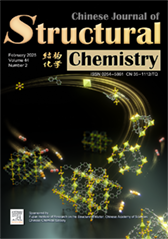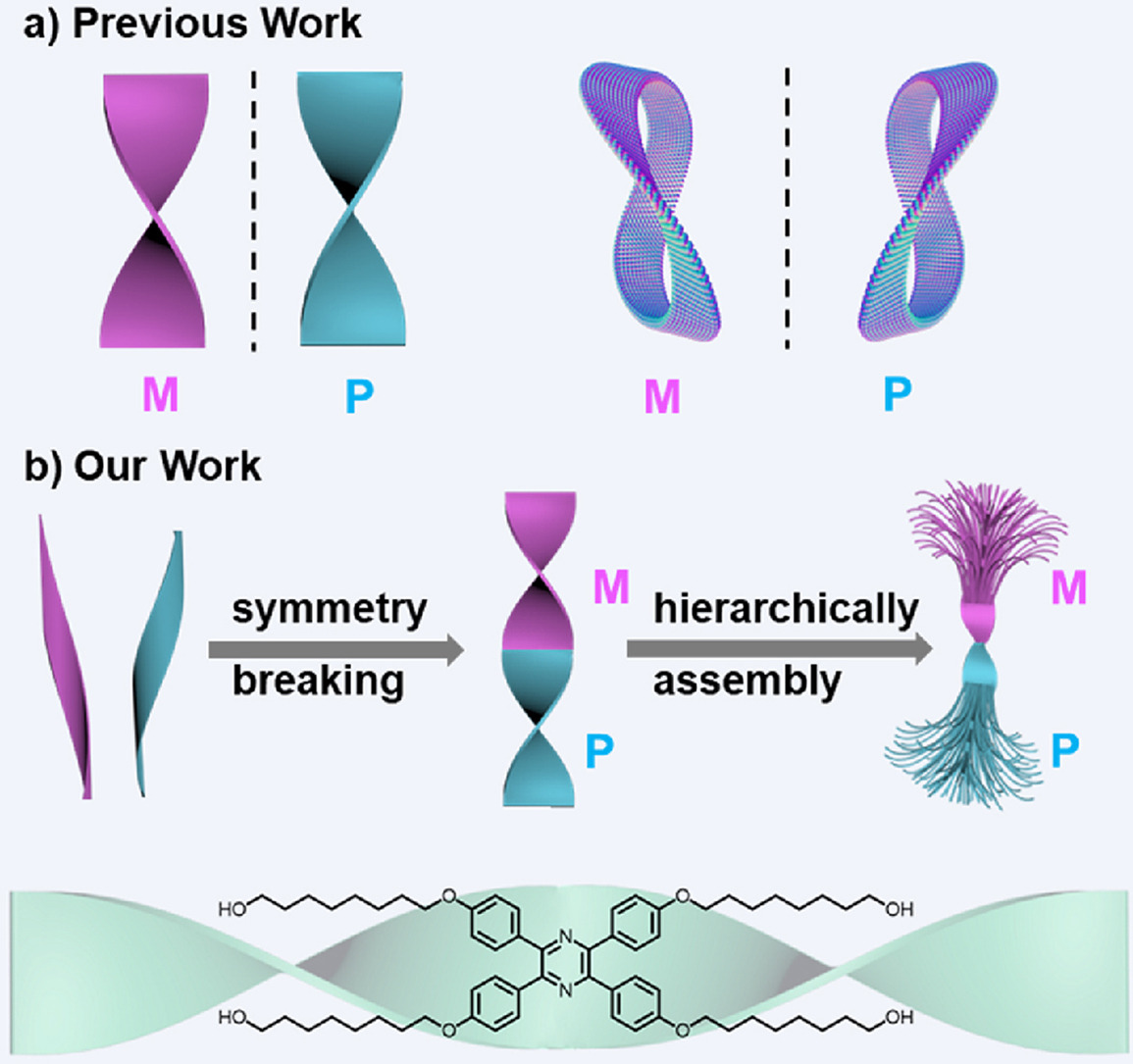
A new SIFSIX anion pillared cage MOF with crs topological structure for efficient C2H2/CO2 separation
Huirong Chen, Yingzhi He, Yan Han, Jianbo Hu, Jiantang Li, Yunjia Jiang, Basem Keshta, Lingyao Wang, Yuanbin Zhang* Submit a Manuscript
Yuanpeng Ye, Longfei Yao, Guofeng Liu*
Chin. J. Struct. Chem., 2025, 44(2), 100460. DOI: 10.1016/j.cjsc.2024.100460
February 1, 2025
Symmetry breaking; Supramolecular chirality; Tetraphenylpyrazine; Circularly polarized luminescence; Self-assembly
ABSTRACT
Symmetry breaking, a critical phenomenon in both natural and artificial systems, is pivotal in constructing chiral structures from achiral building units. This study focuses on the achiral molecule 8,8',8'',8'''-((pyrazine-2,3,5,6-tetrayltetrakis(benzene-4,1-iyl))tetrakis (oxy))tetrakis (octan-1-ol) (TPP-C8OH), an aggregation-induced emission (AIE) molecule, to explore its symmetry breaking behavior in supramolecular assembly. By analyzing TPP-C8OH in various solvents—both non-chiral and chiral—we find that chiral solvents significantly enhance the molecule's symmetry breaking and chiroptical properties. Specially, alcohol solvents, particularly dodecyl alcohol, facilitate the formation of helical structures with both left-handed (M) and right-handed (P) helices within single twisted nanoribbons. This observation contrasts with previously reported symmetry breaking phenomena in assembly systems. Chiral solvents induce assemblies with distinct helical orientations, resulting in notable circularly polarized luminescence (CPL) and circular dichroism (CD) signals. This study elucidates the impact of solvent choice on symmetry breaking and chiral assembly, offering insights into the design of advanced chiral materials with tailored self-assembly processes.







